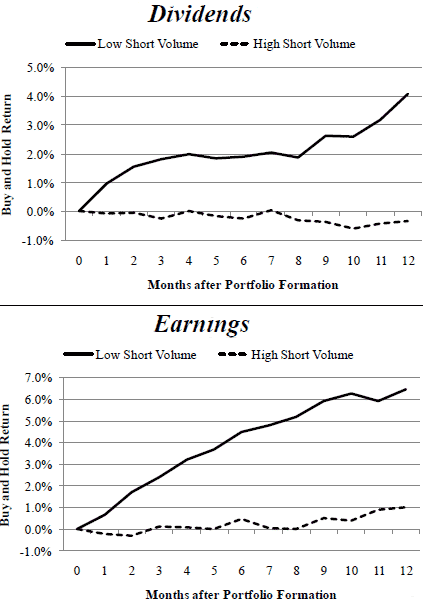How do short sellers gain an informational advantage over other traders? On what news do they focus? Do they anticipate or react to news? In their January 2010 paper entitled “How are Shorts Informed? Short Sellers, News, and Information Processing”, Joseph Engelberg, Adam Reed and Matthew Ringgenberg combine detailed data on short selling with data on news releases to investigate how short sellers use news. Using detailed information on short sales (daily short volume divided by total volume) for a broad sample of stocks and relevant news releases spanning January 3, 2005 through July 6, 2007, they conclude that:
- Abnormal short selling predicts lower future returns, with the effect largely concentrated around news releases (and perhaps insignificant in the absence of news). In other words, consistent with the interpretation that short sellers are good information processors, the most informative short sales are in response to news.
- Any systematic elevation in the ratio of short volume to total volume occurs after news stories (there is no evidence of anticipation of adverse news). On average, short sellers appear to trade on publicly available information.
- The most profitable short sales are not by market makers, but by speculators (other traders).
- The ability of short sellers to predict returns concentrates in six news categories: divestitures or asset sales; earnings; earnings projections; management issues; new products and services; and, stock ownership. For these categories, short sellers tend to trade relatively late, confirming a reliance on public information.
The following charts, taken from the paper, display buy and hold returns over the 12 months after two types of news releases (news about Dividends and news about Earnings) for two portfolios. One portfolio consists of stocks with low short volume as a percentage of total volume the day after news release (Low Short Volume), and the other consists of stocks with high short volume as a percentage of total volume the day after news release (High Short Volume). Results for both types of releases indicate that short sellers on average successfully discriminate between good news and bad news. Similar indications for matched portfolios without news releases are much less pronounced. In other words, short sellers appear to exploit public information by determining whether news is good or bad.

In summary, evidence indicates that short sellers are on average skilled public information processors, successfully discriminating between future underperformers and outperformers, with exploitation concentrated after several categories of news releases.